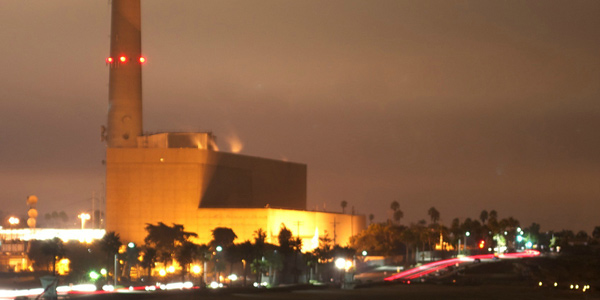By Jason Fordney
California’s utilities are about 2,000 MW short of local resource adequacy (RA) requirements for 2018 according to CAISO, which has asked state regulators to restructure the RA program.
In a Nov. 13 report, the ISO evaluated the 2018 resource adequacy plans of Pacific Gas and Electric (PG&E), Southern California Edison (SCE), and San Diego Gas and Electric (SDG&E). RA requirements are broken down by Transmission Access Charge (TAC) areas, which are based on the service areas of the state’s three investor-owned utilities.
“The ISO’s evaluation has identified individual [load-serving entity] and collective capacity deficiencies in several Local Capacity Areas in the PG&E, SCE and SDG&E TAC Areas,” the ISO said.

San Diego Gas & Electric’s Encina plant
Because CAISO evaluates RA for local load pockets as well as the overall system, capacity procurements made through the California Public Utilities Commission RA program don’t always align with the reliability needs identified by the ISO. As a result, the ISO at times depends on out-of-market payment schemes to keep fossil-based resources online to support local reliability, a practice that has created tension among market participants and concern at the ISO’s Board of Governors. (See Board Decisions Highlight CAISO Market Problems.)
The CPUC’s RA program requires an LSE’s capacity to be available to CAISO when and where needed. There are three types of RA: system resources, local resource adequacy and flexible resources, a category added in 2015 to help manage the changing resource mix.
Deficiencies Abound
The CAISO Tariff allows LSEs and electricity suppliers to address individual capacity deficiencies before the ISO obtains “backstop” procurement. The LSEs are not required to purchase capacity from a specific resource to meet a local need, but can purchase from any resource located locally or with adequate transmission.
“However, to the extent that the aggregate LSE showings do not comprise the right mix of resources that meet the LCR [local capacity requirement] criteria and ISO effectiveness needs, a deficiency may exist that would cause the ISO to procure individual and/or collective backstop capacity,” the ISO said.
Such deficiencies did indeed show up in CAISO’s findings. The report found an local capacity resource (LCR) shortfall of 1,072 MW in the PG&E TAC, nearly all of which represents a “collective deficiency” to be addressed by all LSEs within the area. Individual LSE deficiencies represent just 72 MW of the total.
PG&E area shortfalls include a 574 MW need in the South Bay-Moss Landing sub-area in the San Francisco Bay Area, and a 422 MW need in the “South of Palermo” section of the Sierra Area.

Pacific Gas & Electric’s Moss Landing Gas-Fired Power Plant
The SCE area needs an additional 317 MW in the Moorpark portion of the Big Creek-Ventura area, the report shows.
CAISO’s 2018 assessment for SCE includes generators that are set to retire in 2020 because of once-through-cooling rules, including a combined 2,076 MW of capacity from NRG Energy’s Mandalay and Ormond units. The proposed replacement, NRG’s proposed Puente natural-gas fired plant, is strongly opposed by environmental groups and some in the local community.
NRG asked the California Energy Commission to suspend the permit application after two members of the agency recommended the full commission deny the permit for the plant. (See NRG Signals Pull-out on Proposed Puente Plant.)
In SDG&E’s TAC, the overall deficiency is 560 MW, with individual LSE deficiencies accounting for 475 MW of the total.
Reforms Needed
Separately from the Nov. 13 report, the ISO recently joined with IOUs in asking the CPUC to make fundamental changes to the RA program, which is meant to procure sufficient resources to meet reliability needs. CAISO filed comments Nov. 9 in the CPUC’s latest RA proceeding saying it agrees that the commission should “establish a separate track of this proceeding to address fundamental resource adequacy issues.”
The IOUs want the CPUC to simultaneously consider the interplay among the CAISO market structure, the RA construct and state policy goals.
CAISO and others cite the increasing number of reliability-must-run agreements that the ISO has been forced to sign with natural gas units, the most recent being Calpine’s Metcalf Energy Center. CAISO said “the rapid transformation and nature of the resource fleet and other factors are exposing fundamental inadequacies in the current resource adequacy framework.”
But the ISO also noted that RMR designations “are a result of these events, not the root cause, and they highlight the need to comprehensively re-examine the resource adequacy program.”


